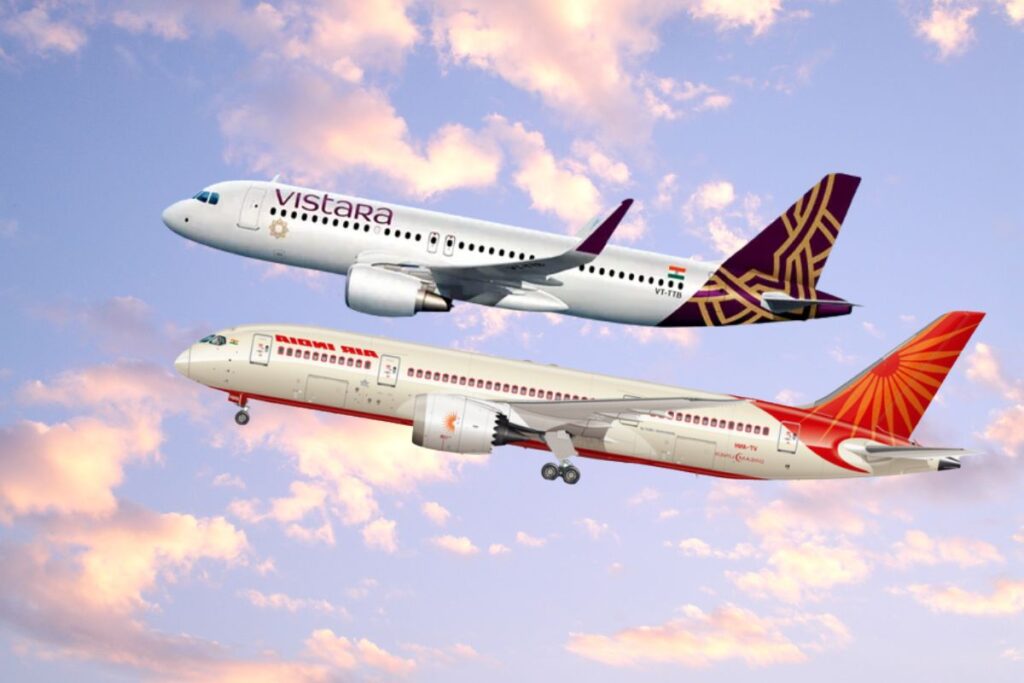What the Air India-Vistara Merger Means For Indian Cities
The merger of Air India and Vistara will create India’s second-largest airline, behind IndiGo. The new Air India will have a much greater presence in major cities, doubling capacity in Delhi, its main hub. With a combined capacity of 16.8%, the new Air India will be three times larger than Go First, presently fourth. Air India’s domestic flights will also increase from 49 to 81 airports served, with the addition of Dehra Dun and Ranchi.

When looking at major metro-level routes, such as Delhi, Mumbai, Bengaluru, Hyderabad, Chennai, and Kolkata, Air India’s capacity share between those cities would grow by 140%: from 2.0 million to 4.8 million. Vistara would particularly help Air India to expand its metro route presence in Mumbai; depending on how exactly Air India would use the slots it obtained.
IndiGo, India’s largest airline by market share has consistently been the top international airline from India. This winter, it had 2.3 million international departing seats and 15% of the market (Indian and foreign carriers).
The potential Air India and Vistara merger could be a game-changer in the Indian airline industry, as it would give Air India the capacity to compete with IndiGo for international markets. And also, it could become a formidable force in the Indian aviation market. Air India has a much larger fleet and a much more established international presence. The merger between Air India and Vistara could also have an impact on domestic markets. Air India currently holds around 15% of the domestic market, while Vistara has only around 5%. If the two carriers merged, they would have a combined market share of around 20%, making them a formidable competitor to IndiGo’s dominant position.



